Read time: 5 minutes
Intent data is a powerful tool, and one that has changed the face of B2B marketing. The way in which it has evolved over the last few years means it's now an indispensable tool. With the power to improve lead generation, speed up the sales cycle and boost conversions, it's no longer a nice-to-have.
And yet, despite being widely adopted, many B2B marketers are still struggling to get to grips with it. For those looking to keep up with the competition, getting the most out of their intent data investments can be a challenge for teams already feeling the pressure to perform.
While many vendors are shouting about the benefits and capabilities of intent data, we wanted to get to the heart of exactly how intent data is impacting B2B lead generation by speaking with 416 B2B marketers who are currently using it.
Skip the summary and download the full report here.
Here's a summary of what we found:
53% of marketers use intent data for lead generation
It's no surprise that over half of marketers are using intent data for lead generation, but maybe it's more surprising that nearly half aren't.
However, lead generation did rank #1 when marketers were asked how they're using intent data. (Followed by email marketing in second place and sales prioritisation in third.)
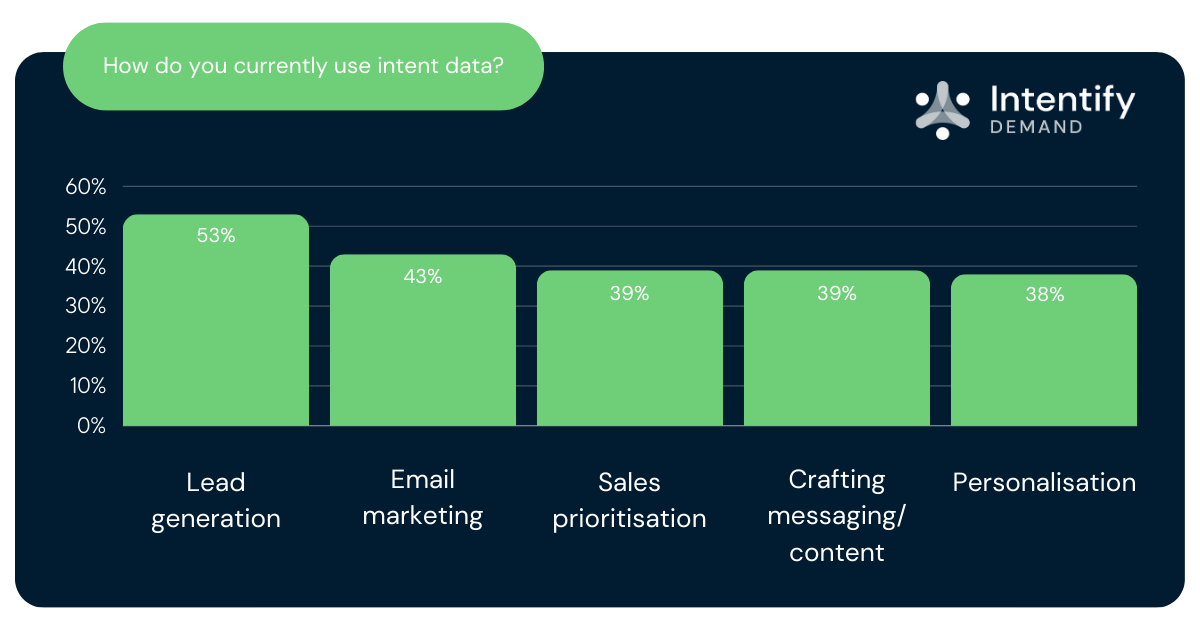
There are still a lot of marketers not boosting their lead generation programme with the power of intent. Not only could this negatively impact the buying journey, but it makes it harder to deliver relevant content to your target audience. Layering first party intent data into your lead generation programme can make a huge difference in terms of measurable outcomes.
93% of marketers rely on 2 or more sources for their intent data
There's so much data in the world, almost too much. Statista predicts there'll be 147 zettabytes of data created, captured, copied and consumed worldwide in 2024. That's almost double compared to 2021.
So it only makes sense that marketers are gathering data from multiple sources. In fact, almost all marketers (93%) are using two or more intent data sources, giving them access to a wider pool of intent signals in which to draw insight.
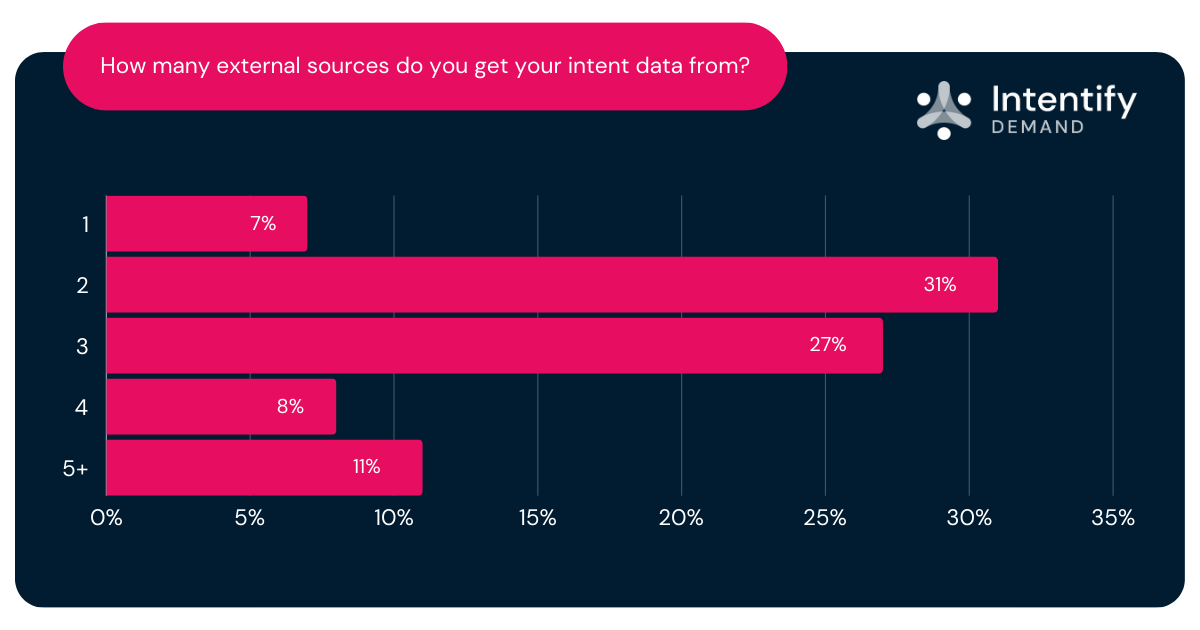
However, determining which intent data sources are trustworthy will be another matter entirely, and it'll be down to each individual business to assess their sources and determine whether or not they provide relevant intent that can be used to create actionable insights.
The top three challenges when using intent data are: maintaining data accuracy from multiple sources, applying intent data to actionable outcomes, and measuring return on investment (ROI).
When asked about their intent data challenges, 35% of marketers said their biggest challenge was maintaining accuracy from multiple sources. Considering 93% are leveraging 2 or more sources, there's a lot of opportunity for inaccurate or conflicting information to creep in.
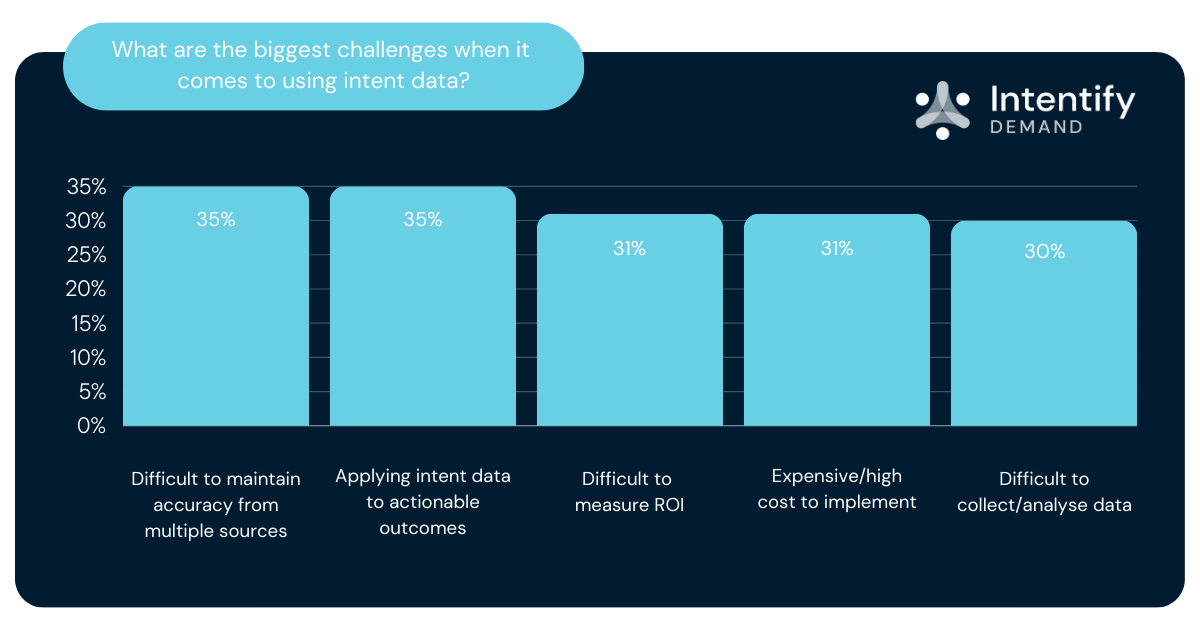
The next challenge (also 35%) was applying B2B buyer intent data to actionable outcomes. Satisfied that their intent data investments have paid off, marketers are now able to collect and interpret intent signals, but it seems many are at a loss as to how to apply these insights to their marketing efforts in order to achieve desired outcomes. It's an ongoing issue with big data: being able to apply it in a way that makes it useful. So why is B2B intent data any different?
While intent data is able to better connect prospective buyers with relevant brands, measuring ROI is a constant headache for marketers, no matter what tools they use or what strategies they put in place. Demonstrating a positive return on investment is a key issue as failure to do so could result in reduced marketing budgets as well as added pressure and scrutiny from senior stakeholders.
97% of marketers say intent data helps them find better quality leads
With 97% of marketers saying that intent data helps them find better quality leads, it's clear that the challenges of data accuracy, actionable outcomes and ROI are worth overcoming.
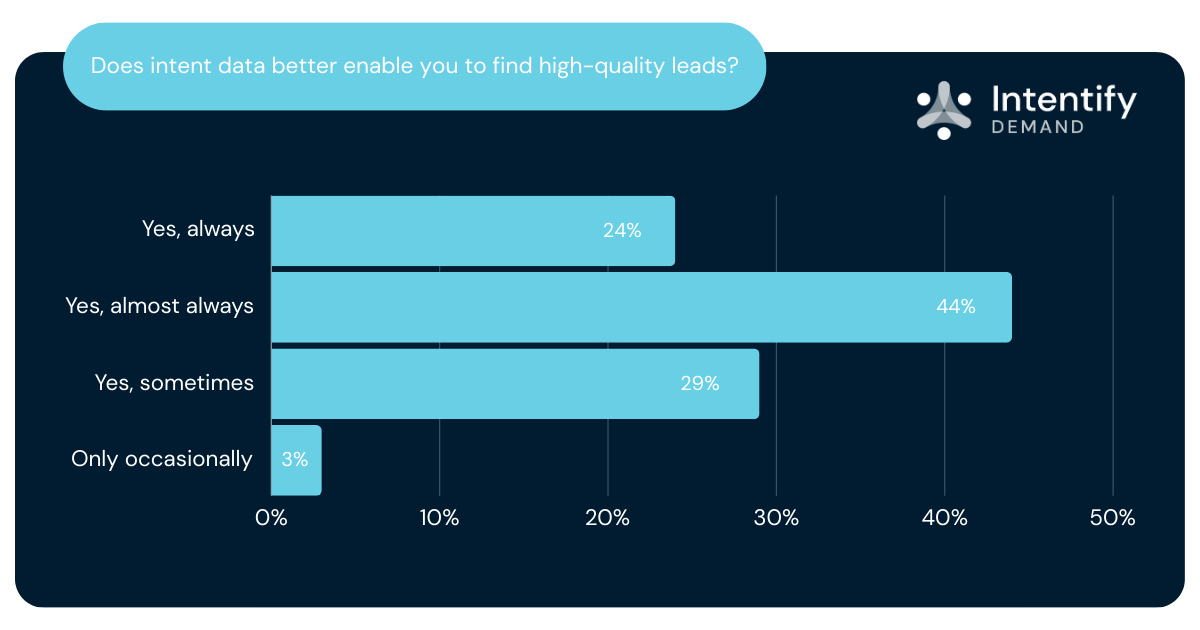
In fact, 1 in 4 marketers (24%) say intent data always enables them to find better quality leads, while almost half (44%) say it almost always helps. That's pretty compelling stuff, and shows just how powerful intent data can be when connecting with prospective buyers.
93% say their lead conversion rate increases when using intent data
Better yet, not only do most marketers say intent data helps them to find better leads, 93% of them also say their lead conversion rate increases too. And this is crucial to filling the sales pipeline. It means that marketers can increase the effectiveness of their marketing strategies, while also better supporting sales and the bottom line too.

With a third (37%) claiming their sales team can convert intent-based leads 3, 4 or even 5 times faster compared to normal leads, it's obvious there's inherent value in applying intent data to lead generation activities. By having a better insight into intent, paired with a strategy that supports intent-driven campaigns, marketers are able to ensure their resources can go further.
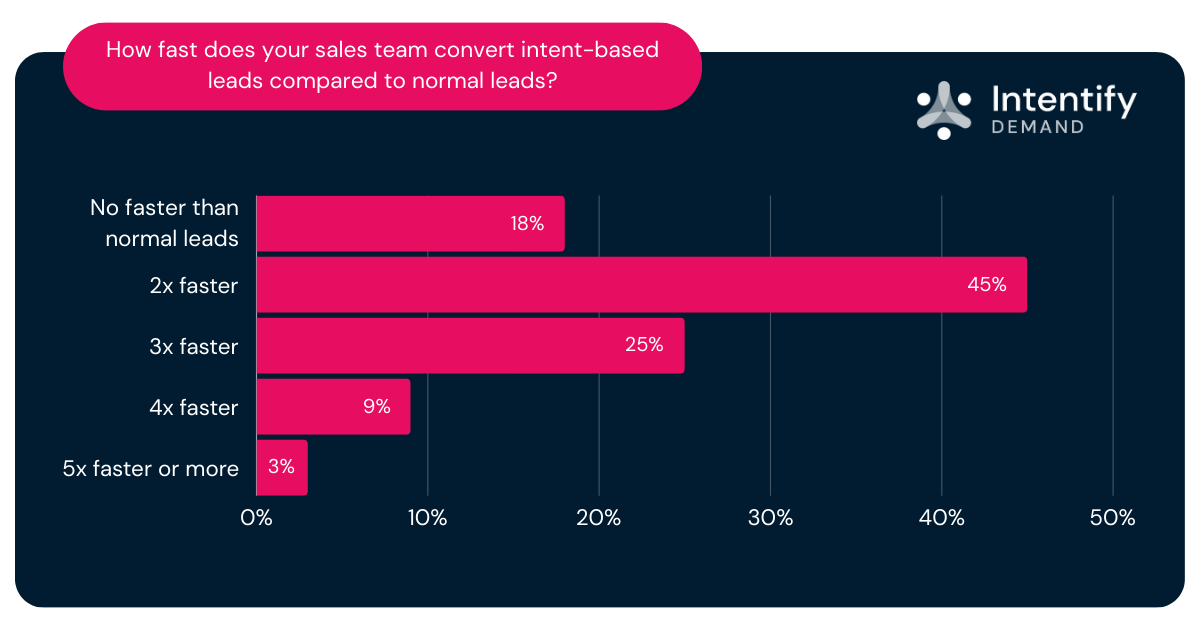
And if that doesn't showcase the power of intent, nothing will.
So how is intent data impacting B2B lead generation?
It's clear from our research that intent data has a big impact on the success of B2B lead generation programmes. Despite a number of challenges still in place, intent data is able to provide more insight into the buying process, while allowing marketers to tailor their campaigns to suit the needs of prospective customers. More often than not, this translates into better conversion rates, an improved buyer journey and overall higher customer satisfaction.
Like any strategic approach, it can be difficult to get a handle on things, implement the right tools into your current tech stack, upskill your team to efficiently use them and deliver tangible results, all at the same time. But it's promising to see that the overwhelming majority are reaping significant benefits from implementing intent data in their marketing strategies.
In this case, it's safe to say that intent data is having an incredibly positive effect on B2B lead generation and is better enabling marketers to reach the right prospects, while also supporting sales reps when closing deals and winning more business.




